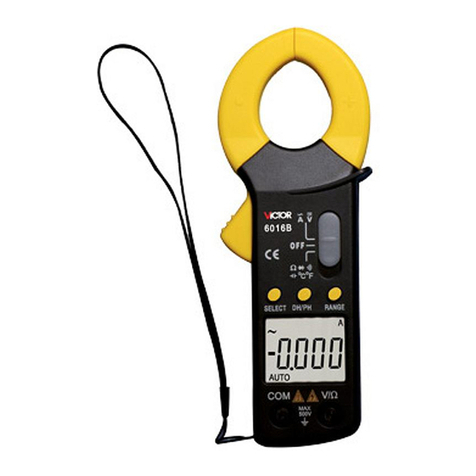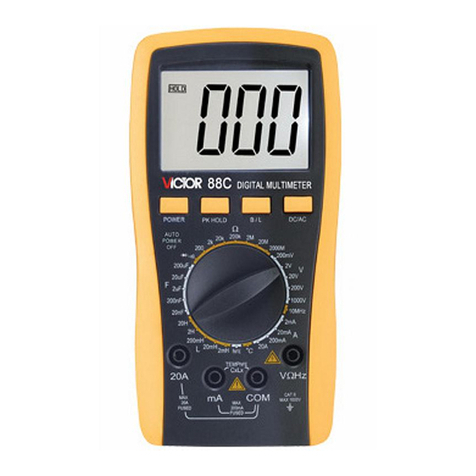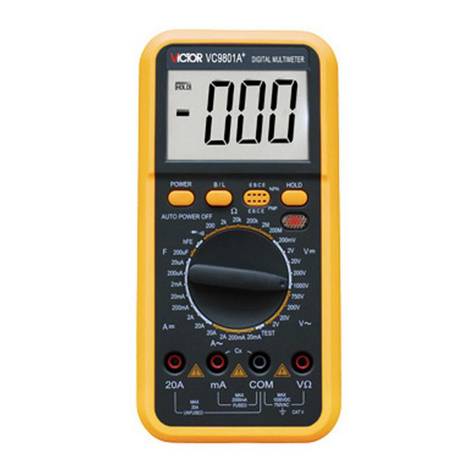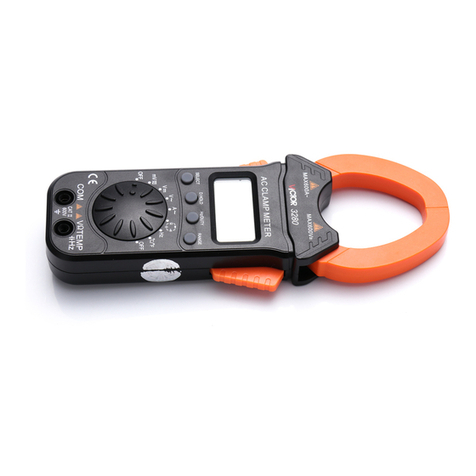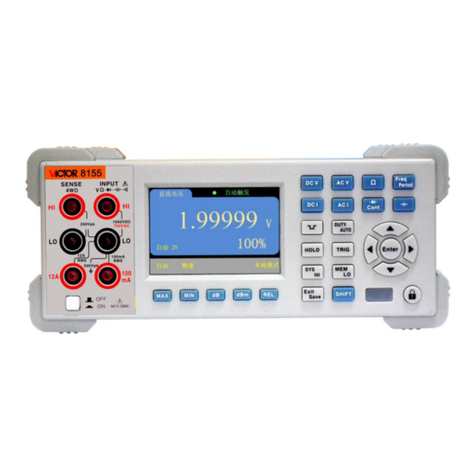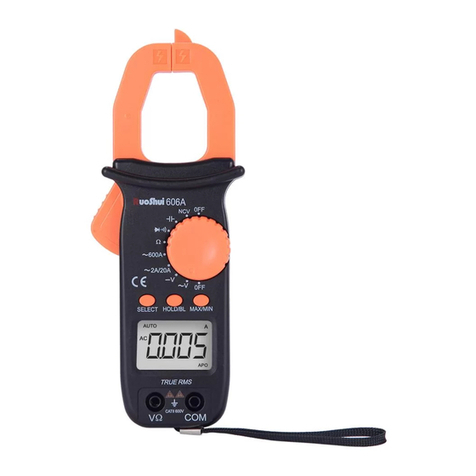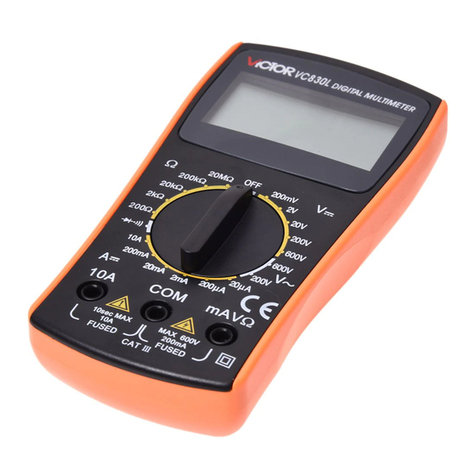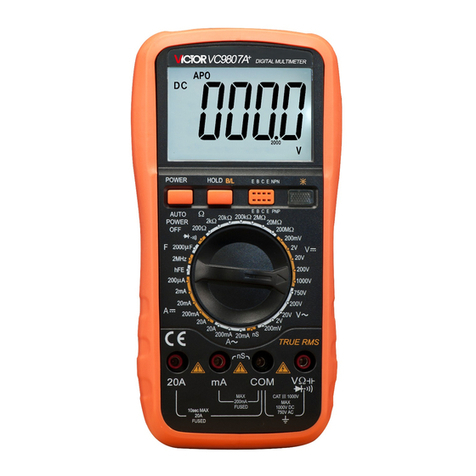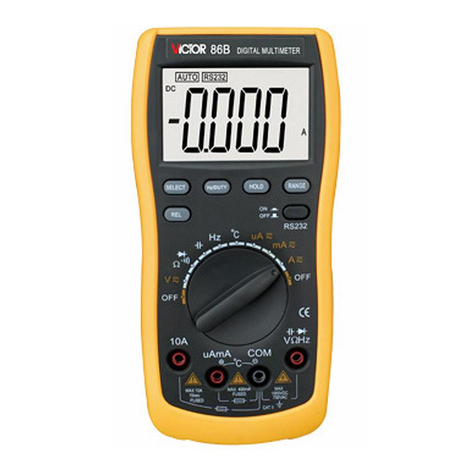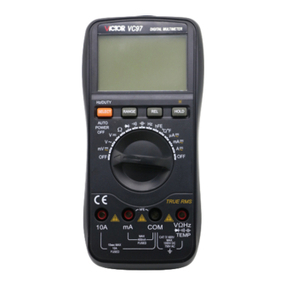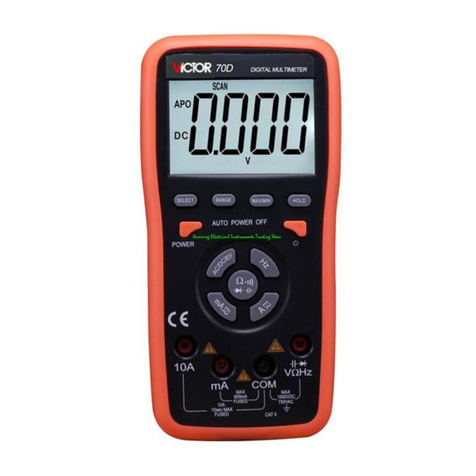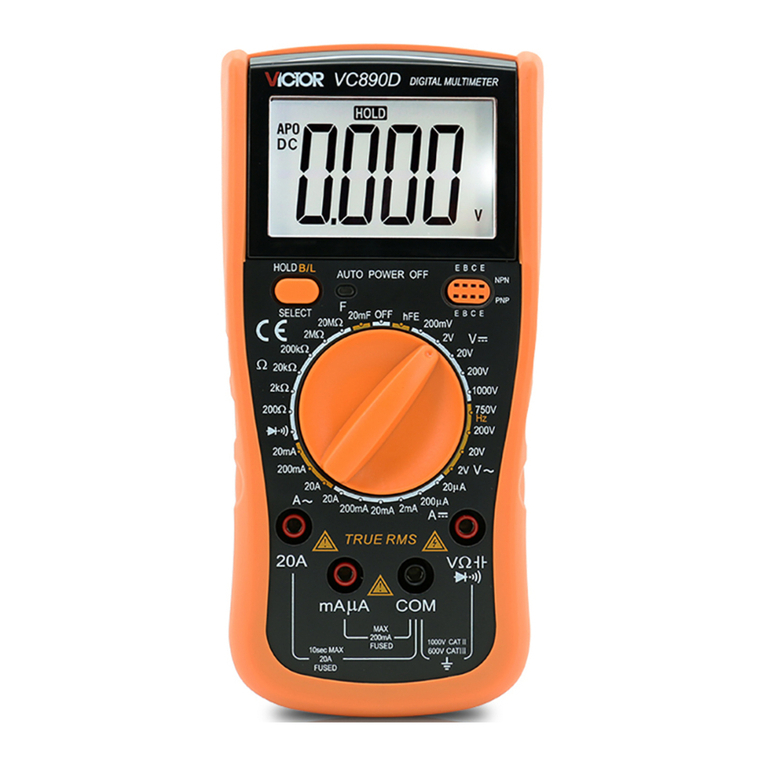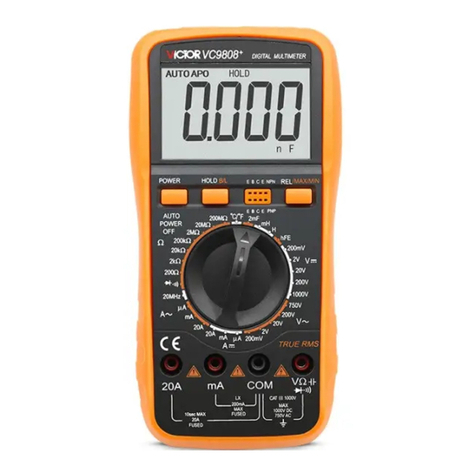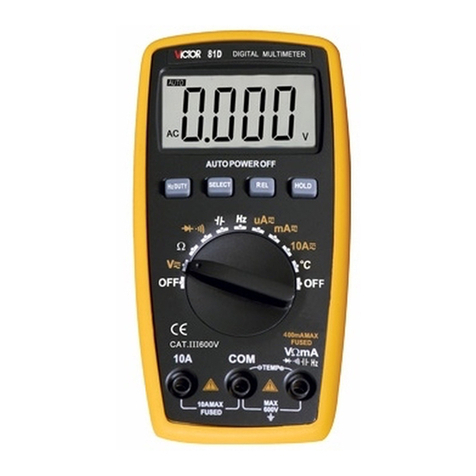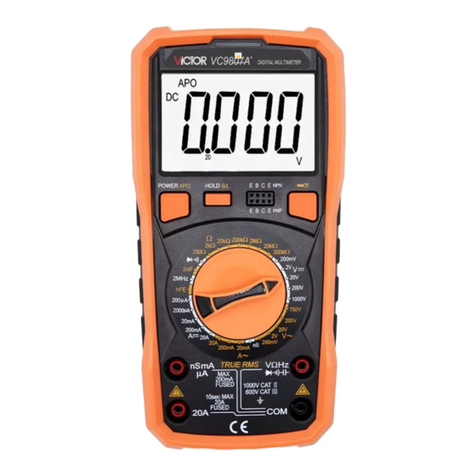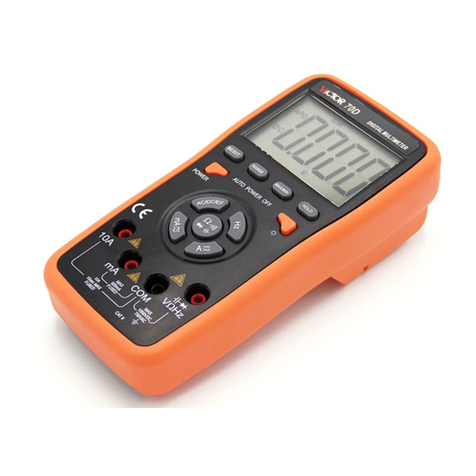4-1.Fro t pa el
1.LCD:display the measured value
2-1 Power switch:turn on or off the power
2-2. Backlight key: turn on or off the power
2-3. hFE testing terminal:for measuring
transistor hFE
2-4. HOLD key:press the key down, the
measured value will be hold and“ H ”
signal appears; press it down again,“ H ”
signal disappears and out of the HOLD mode.
2-5.Continuity buzzer key
3.Knob switch: for changing function and range
4. Testing terminal for 20A current
5. Testing terminal for less than 200mA current and conductance
6. Common ground
7. Terminal for Voltage, resistance, and fre uency testing
3.OPERATION
1.Check 9-volt battery by setting the ON-OFF switch to ON. If the battery is weak, a
sign will appear on the display. If this does not appear on the display, proceed as
below. See MAINTENANCE if the battery has to be replaced.
2.The mark, or sign next to the lead jacks, is for warning that the input voltage or current
should not exceed the indicated values.
This is to prevent damage to the internal circuits.
3.The function switch should be set to the range that you want to test before operation.
3.1 DC a d AC Voltage measureme t
1. Connect the BLACK test lead to “COM” jack and RED test lead the “V/Ω” jack.
2. Set the FUNCTION switch to desired DCV or ACV position.
3. Connect the probes across the source or load under measurement.
Note:
1) If the voltage ranges is not know beforehand set the FUNCTION switch to a high
range and work down, until obtain the most accurate reading.
2) When only the figure "1" is displayed, over range is being indicated and the
FUNCTION switch must be set to a higher range.
3) : Do not apply more than DCV1000V/AC700Vrms to the input. Indication is
possible at higher voltages but there is danger of damaging the internal circuitry,
to covert function and range switch, test leads must leave test dot
4) Use extreme caution to avoid contact with high voltage circuits when measuring high
voltage.
3.2 DC a d AC Curre t measureme t
1. Connect the BLACK test lead to “COM” jack and RED test lead the “mA” jack (max
200mA.)
2. Set the FUNCTION switch to desired current range position.
3. Connect the probes in series with the current source to be measured.
4. For current measurement from 200mA to 20A follow generally the above procedure
but connect the RED test lead to "20A" jack.
Note:
1) If the current range is not know beforehand, set the FUNCTION switch to a high
range and work down. Until obtain the most accurate value.
2) When only the figure "1" is displayed over range is being indicated and the
FUNCTION switch must be set to a higher range.
3) : The max input current is 200mA,or 20A depending upon the jack used (Test time
less than 15 seconds). To covert function and range switch, test leads must leave
test dot.
Excessive current will blow the fuse so that must be replaced.
The 20A range has not protected by a fuse.
4) The max terminal voltage drop (burden voltage) is 200mV.
3.3 Resista ce measureme t
1. Connect the BLACK test lead to “COM” jack and RED test lead the “V/Ω” jack.
2. Set the FUNCTION Switch to desired resistance range position.
3. Connect the probes across circuit to be tested.
Caution: Ensure that the circuit to be tested is "dead".
Note:
1) If the resistance value being measured exceeds the max value of the range selected,
and over range indication will be displayed ("1"). Select a higher range, for
resistance of approx. 1MΩand above, the meter may take a few seconds to
stabilize. This is normal for high resistance readings.
2) When the input is not connected, i.e. at open circuit, the figure "1" will be displayed
for the over range condition.
3) When checking in-circuit resistance, be sure the circuit under test has all power
removed and that all capacitor are fully discharged.
4) Don't input voltage. This is to prevent damage to the internal circuit.
3.4 Capacita ce measureme t
1. Setting function switch to F position.
2. Short test capacitance for full discharge.
3. Connect the test capacitor to the input Cx sockets, noting the polarity connections
when re uired.
Note:
1) If the capacitance value being measured exceeds the max value of the range selected,
and over range indication will be displayed ("1"). Select a higher range.
2) Before insert the capacitor into Cx socket, the LCD display may not be zero, the
residual figures will be decreased gradually and could be disregarded, because
measurement result can override this figure, without affecting the accuracy.
3) : Do not connect an external voltage or current to the measuring terminals.
Capacitors should be discharged before insert into Cx socket.
4) Unit: 1uF=103nF 1nF=103pF
3.5 Freque cy measureme t
1. Connect test leads or shield cable to "COM" and "V/ " jack.
2. Set the function switch to the 20kHz range position, and connect test leads or cable
across the source load under test.
Note:
1) Do not apply more than 250V DC/AC rms to the input. Indication is possible at
voltage higher than 10VAC rms, but readings may be out of specification.
2) In noisy environment, it is preferable to use shield cable for measuring small
signal.
3) Use extreme caution to avoid contact with high tension circuits when
measurement high voltage.
